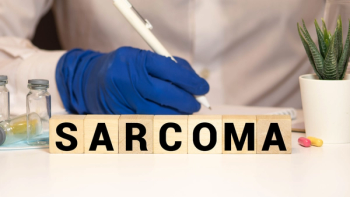
- Fall 2007
- Volume 6
- Issue 5
Web Exclusive: Types of Sarcoma
While sarcomas can be divided into soft-tissue or bone sarcomas, there are about 600 different types of sarcomas patients can be diagnosed with.
BONE TUMORS
Osteosarcomas — Tumors arising from the cells that form bone
Chondrosarcoma — Tumors of cells that form cartilage
SOFT-TISSUE SARCOMA
Liposarcomas — Tumors that arise from cells of fat tissue. They can occur anywhere in the body, but are most often found at the back of the abdominal cavity.
Leiomyosarcomas — Tumors that originate in cells with smooth muscle characteristics (smooth muscle is muscle that contracts without conscious control and is found in walls of internal organs, such as stomach and intestine and bladder and blood vessels). These tumors can be found anywhere in the body, but are usually detected in the uterus.
Rhabdomyosarcomas — tumors that resemble developing skeletal muscle. Rhabdomyosarcoma is the most common type of childhood soft tissue sarcoma. These tumors tend to grow most often in the arms and legs, but can also develop in the head or neck area, as well as in the urinary and reproductive organs.
Malignant peripheral nerve sheath tumor (MPNST) — also called neurofibrosarcoma, is a cancer arising from the cells that surround the nerves.
Alveolar soft-part sarcomas — the cell of origin remains unclear for this, but is likely related to primitive nerve cells. This sarcoma is a rare form of cancer most often found in young adults.
Kaposi’s sarcoma — cancer of the lining of blood vessels and is associated with a strain of herpes virus. It is a sarcoma often associated with AIDS, but it can also occur without HIV infection in older individuals.
Angiosarcomas or Hemangiopericytomas — malignant tumors that arise from the blood or lymphatic vessels.
Synovial sarcomas — tumors made up of cells that resemble the cells in joints. Synovial sarcomas can be found anywhere in the body, and are often diagnosed in young adults.
Fibrosarcomas — tumors in the fibroblast-type cells, which are the cells that form scars and perform other important connective tissue functions.
Desmoid tumor — not strictly a sarcoma since it is not technically a malignancy. However, there is a risk that a Desmoid tumor may recur and cause significant problems to the patient.
Malignant fibrous histiocytomas — An older term, increasingly replaced by more specific subtype names, which refers to a poorly defined sarcoma, usually in adults.
Ewing’s family of tumors — A group of cancers that includes:
- Ewing’s tumor of bone (ETB, also known as Ewing’s sarcoma of bone)
- Extraosseus Ewing’s (EOE) tumors,
- Primitive neuroectodermal tumors (PNET or peripheral neuroepithelioma), and
- Askin’s tumors (PNET of the chest wall)
Although Ewing’s is usually thought of as a bone tumor in children, it is increasingly often seen in soft tissue in younger adults and exhibits a different biology and better response to chemotherapy compared to other sarcomas.
Articles in this issue
about 16 years ago
More About Painabout 16 years ago
The Problem with Pain Centersover 18 years ago
Beneficial Riskover 18 years ago
The New Sarcoma Storyover 18 years ago
The HRT Connectionover 18 years ago
In Search of Quality Mammographyover 18 years ago
Powers of Predictionover 18 years ago
Progress in Treating Multiple Myelomaover 18 years ago
Use As Directedover 18 years ago
All in the Family




